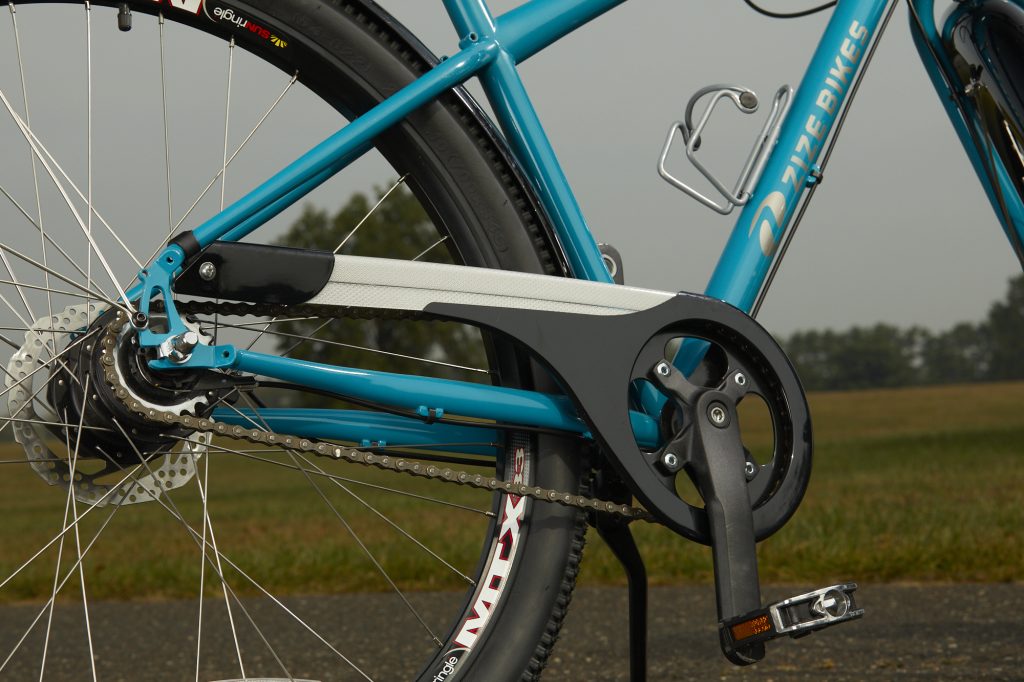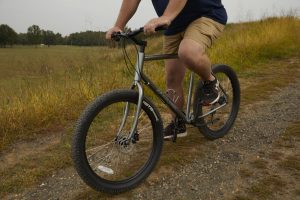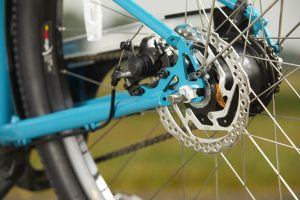Regular bicycle chain maintenance is essential for an easier, safer, more comfortable, and enjoyable ride. So check out the following very important facts and guidelines on drivetrain and bicycle chain maintenance.
Bicycle Chain Replacement
The modern bike chain has a half inch pitch. This means that it is one half inch, pin to pin. Each link consists of 2 inner plates, 2 outer plates, 2 rollers, and 2 pins. While the pins fit tightly into the outer plates, both the rollers and the inner plates freely pivot on the pins.
The cogs on your rear wheel and the chain rings on your cranks wear along with your chain. It’s a good thing you can do some things to prevent this damage without spending much:
1. One way is to replace your chain before it wears out. Checking your chain monthly (or more often if you ride on rough or bumpy conditions) and replacing it as soon as it wears will make your other bike parts last much longer. Remember that using an old chain can damage your cassette. So it is important to replace chain when it wears out. If you ride on a regular bases, you ma need three to four chains every year.
2. Another way is to replace your chain immediately when it wears out. Your ride will give you an idea if your chain needs replacement. As a chain stretch, cog sets and the small chainrings wear out. Check out the photo of a new and worn out chainring and see the difference. An old chainring looks like sharp teeth.
When you pedal under load, such as riding uphill, and your chain “skips,” you need to do something, otherwise, if you keep on pedaling, your other bike parts may get damaged. If the skipping is worse, you may need a new chain, cassette, and possibly a new small chainring.
Bicycle Chain Maintenance and Care
To maximize your chain’s life, consider the following three important things:
1. Quality of the Chain:
The differences between more expensive and less expensive chains are the riveting of the pins, quality of materials, and shape of the plates. Chain side plates are designed to help chains shift better. This means better quality, smoother shifts. Higher quality materials are used on more pricey chains to prolong chain life. Additionally, pins are “mushroomed” in higher quality chains after they’re pushed into the plates at the manufacturing site. This enhances the tolerance of chain plates and makes chain sturdier and longer lasting.
2. Maintaining Your Chain:
Regular bicycle chain maintenance does not need to be a laborious and messy process. It can be as simple as wiping down your chain with a clean dry rag whenever you see dirt on it. Do not wait until dirt, grime, and grease get gummy or harden before you pay attention to your chain. If your chain squeaks or gets too noisy, it means it needs lubrication. Keep in mind that when you notice lube on your chain, there is too much. Wipe down excess lube with a clean rag. Remember that only the inside of the chain needs lubrication.
There are a variety of lubricants available in the market today — dry, wet, self-cleaning, etc. Determine which one works for your best and learn how to use it properly. Choosing lube is a personal preference. As a general rule: if you ride on wet conditions, use wet lube. If you ride in dry conditions, use dry lube. Spray applicators can be messy, so you may want to avoid those.
To lubricate your chain, pedal the cranks backwards three to four times and drip the lube onto your chain. It would be helpful if you rest your hand with the lube on the chainstay and contact the lube applicator to your chain. Squeeze as you pedal. When you’re done, backpedal five to six times more and then wipe off excess lube with a clean rag. If your chain is dirty, the rag will collect the dirt and excess lube. Use the cleaner side of your rag and continue wiping by pedaling backward with one hand, holding your chain with the rag in your other hand.
3. Riding on the Chain:
Your style of riding significantly affects the life of your chain. Take note that if you ride in a high gear, the lower cadence puts more weight and pressure on the chain more than if you spin in a lower gear. The less your chain is loaded, the longer it can last. Reducing the amount of cross gearing (small chainring and small cog in the rear or large chainring and large cog in the rear) can also help prolong the life of your chain.
For bicycles that require less maintenance and repair, visit www.ZizeBikes.com, the maker of custom bicycles with internal gears made for for every body, including bicycles for heavy riders which can support weight up to 550 pounds. Click on this link to learn more: https://zizebikes.com/category/bicycles/Default.aspx.







